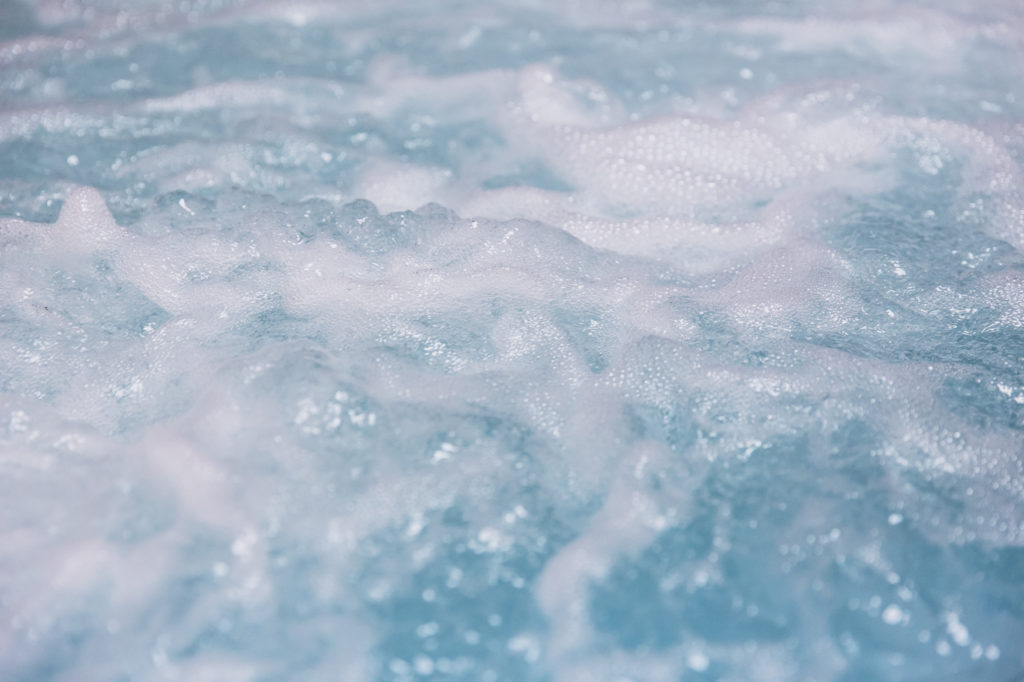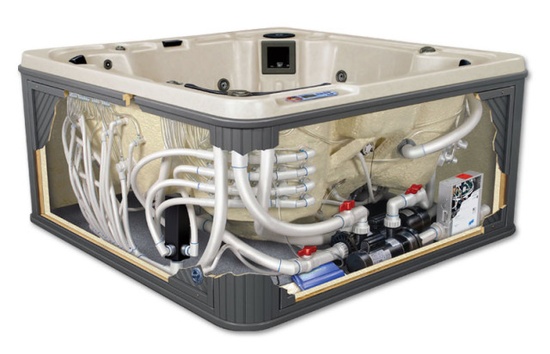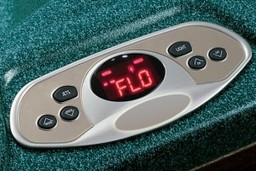Hot tub problems? Check out the hot tub troubleshooting tips in this guide
Owning a hot tub is pretty awesome. It’s like a miniature pool that’s always ready to embrace you in its warmth — providing heat that’s therapeutic to your body, and incomparably soothing on those cool winter days.
But over time, nearly every hot tub owner will run into at least one of the problems we help you solve in this guide. Most “problems” are just part of the natural aging process of hot tubs and can be fixed easier than you think. Others require the help of professionals. But after reading this hot tub troubleshooting guide, you’ll be able to prevent most of these problems from coming up again.
Hot Tub Troubleshooting Guide
7 Hot Tub Troubleshooting Tips
GFCI/RCD keeps tripping
Your ground fault circuit interrupter (GCFI) is the part of your hot tub that makes it safe to sit in a big tub of water connected to an electrical outlet. All jokes aside, a GFCI protects you, and your hot tub against any dangerous electrical faults.
The GFCI is designed to trip when it detects an electrical current traveling an unsafe path. However, because of how sensitive these parts are, sometimes they trip for other reasons.
Factors that can cause your GFCI to trip include: pump, blower, Ozonator, and heating element
So use the method of elimination here to isolate the cause.
-Unplug your pump, then turn your breaker on. If you notice that the GFCI no longer trips, then your pump is the issue.
-If it’s still tripping, unplug your blower and monitor your GFCI again.
-Last, unplug your Ozonator and check if the GFCI trips.
Is it still tripping after unplugging your pump, blower, and Ozonator?
The problem is likely your heating element, which can be replaced with the help of professional pool heating technician.
Hot tub isn’t heating
Most likely cause: heating element
If you’ve had your hot tub for a good amount of time, then the most likely cause of this problem is a bad heating element. But how a heating element usually goes bad may surprise you.
It’s all about water chemistry.
When the chemicals in your water are consistently balanced, corrosion is a lot less likely. But water that isn’t maintained properly becomes chemically harsh, corroding delicate parts of your hot tub much faster
Inspect your heating element. If you spot any heavy corrosion or scaling, replace it
If this doesn’t fix your heating problem, then circulation might be the root cause. Specifically, your pump. If the pump isn’t working, then there’s no way for heat to circulate throughout the water.
Hot tub water is too hot



Most likely cause: faulty heat contactor or thermostat
An ironic problem to have with a hot tub, but a common problem nonetheless.
Usually, the water in your hot tub gets too hot for one of two reasons: a faulty heat contactor or thermostat
TURN OFF ALL POWER TO THE HOT TUB BEFORE INSPECTING ANY PARTS
The heat contactor is essential to managing the heating circuit. You can find it tucked away in the control box of your hot tub.
Normally, the contactor should be able to move freely up and down. But if it’s “sealed” or stuck in place, then it’s time for a replacement.
If the contactor looks fine, then your thermostat may be the issue.
Both parts are replaceable, but we highly recommend leaving an electrical work to hot tub repair professionals.
Hot tub jets aren’t working
Are there no bubbles coming out of the hot tub jets?
Chances are, the jets simply aren’t set in the right position. Most jets can be adjusted to an open position by twisting the face. This will allow water to flow out of the valve, giving you all the hydro massages you could ever want.
BUT, if all of your jets are open, and your pump is definitely working, then the issue may just be an air lock.
+To release an air lock, loosen one of the fittings on your pump. This lets any air trapped in the pipes get out.
Hot tub pump is making noise



Here’s one of the more straightforward hot tub troubleshooting procedures:
If all of a sudden you notice your pump is operating much louder, then it’s likely that age has caught up to it.
Loud noises usually signify worn out bearings inside of the motor. You can still use the pump during this time, but it’s best to have the bearing replaced by a professional as soon as possible. Waiting too long can lead to the motor burning out permanently.
Hot tub pump is leaking
If your hot’s tub’s pump is leaking, it likely involves a loose seal.
So inspect the seals, threading, and O-rings within the pump. These are usually found under the lid and on the inlet/outlets.
If any sealants or oRings are loose or worn, pick up some replacements at your local pool store. Replace them.
Replacing what’s worn will eliminate the leak.
Hot tub displaying error code | Hot tub troubleshooting error codes



Here’s a list of the most common hot tub error codes and what you need to know about them
COOL = the hot tub is currently 20 degrees colder than it’s set temperature
OH/HOT = hot tub has exceeded the heat temperature limit — usually around 118 degrees Fahrenheit
SN = sensor failure
Sn1/Sn2 | SnA/SnB = indicates that either Sensor 1 or Sensor 2 is not working/malfunctioning
FLO/FLC = water flow/pressure issue
ICE = freezing temperatures dedicated/free protection enabled
[Have a pool heat pump that’s displaying error codes? Learn more about pool heater troubleshooting]
Closing thoughts
After reading this hot tub troubleshooting guide, it’s easy to see that fixing most problems just requires a bit of know-how. Understanding how
Although most of the troubleshooting in this guide can be the done by the spa owner, for your safety, we strong recommend leaving electrical and motor work to the professionals. Without working knowledge of hot tub electronics, it’s easy to damage parts or hurt yourself in the process.
Are you also the proud owner of a swimming pool? Then our Pool Owner Guide is the perfect resource for you
Thinking of using a pool heat pump to heat your spa? Here are 5 benefits of using pool heat pumps


